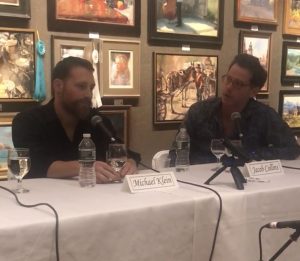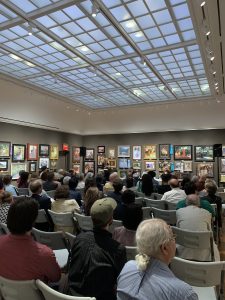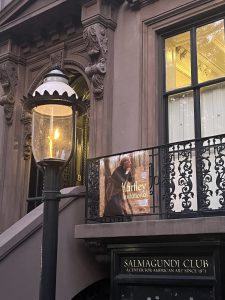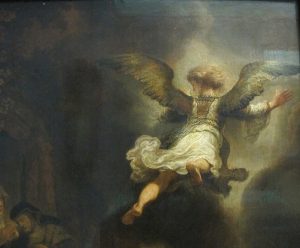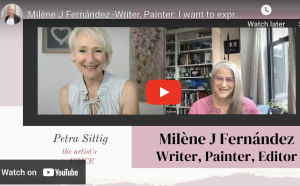Artists: Jacob Collins, Michael Klein, Daniel Maidman
at The Salmagundi Club, New York,
October 2, 2019
Moderator: Milene J. Fernandez
INTRODUCTION
We are seeing a resurgence of skilled-based visual art, along with the establishment of ateliers and academies in America and Europe (e.g. Grand Central Atelier and The Florence Academy of Art) more than 25 years ago. More recently founded ateliers—some as far from New York as Sri Lanka and Australia—as well as the plethora of online academies and courses, potentially accessible to anyone around the world (e.g. Ani, New Masters Academy, etc.), seem to be increasing by the minute. It would be safe to say that today there are more artists who have learned beyond the basics of design, composition, perspective, anatomy, rendering form, and color theory, than 20 years ago.
Yet many aspiring artists—even professional artists—are at a loss in trying to decide how they can best contribute to the culture and society they find themselves in? Artists are asking themselves, “what should I draw, paint, or sculpt, and why is it important?”
Is what artists create today only a matter of just their own individual expression, or are they beholden to a higher purpose? How do we understand the aesthetic principles and need for truth and beauty today?
At a time when the art establishment has massively promulgated the idea that anything goes (in what is considered art), what is the responsibility of the highly-skilled, dare I say, sincere, artist today in the 21st century?
We live in an age when the Western Art tradition is in crisis. The idea of a hierarchy of quality and it’s corresponding value is especially under attack. Similar to how the gold standard was abandoned, the mastery of a work of art is no longer considered to be the standard for its monetary value or cultural influence.
When the first art academies where being established in Florence in the 1500’s, a system of training was planned to be as much intellectual as artistic. The idea that the practice of art would benefit from regular discussion and debate—concerning its character as well as a theoretical analysis of its principles—eventually crystalized. That idea has been hibernating for quite a long time—during what I would call the ‘dark ages of the 20th and 21st centuries’ (in terms of visual literacy, both of the artists and the viewer). I believe that idea is ready to emerge, perhaps burst, out of its cave again.
In this panel discussion I hope we will begin to form a discourse that supports artists who have learned the skills of traditional Western art and who want to play it forward.
